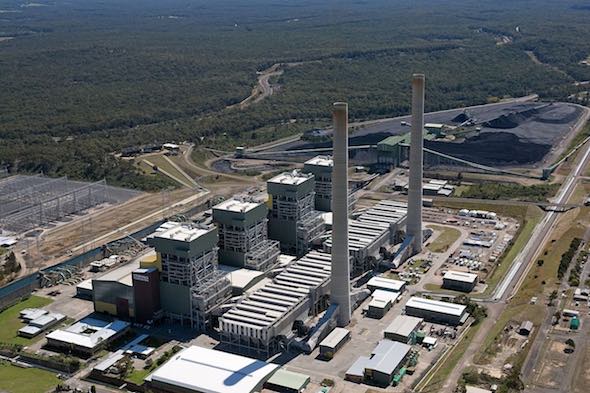
 Origin Energy’s commitment to “science based” climate action has been reaffirmed this week, with the announcement of targets for a 50 per cent reduction in emissions from its coal and gas operations by 2032, and a 25 per cent cut in emissions from traded gas and electricity in that same timeframe.
Origin Energy’s commitment to “science based” climate action has been reaffirmed this week, with the announcement of targets for a 50 per cent reduction in emissions from its coal and gas operations by 2032, and a 25 per cent cut in emissions from traded gas and electricity in that same timeframe.
Origin, which in October aligned itself with the Paris climate pact to hold global average temperature rises to well below 2°C, said on Thursday that it wanted to help lead Australia’s transition to clean energy, both by cutting emissions across its business, and by building more renewables.
“We firmly believe decarbonising our business is not only the right thing to do by our stakeholders and the planet, it also presents opportunities to create value,” said Origin CEO Frank Calabria in a statement on Thursday.
“We have clearly set ourselves challenging targets, yet we are confident in our ability to achieve them having already laid out the five pillars that will provide a pathway for the decarbonisation of our business over time.”
But at least one of Origin’s targets will be far from challenging, considering the gen-tailer’s biggest carbon liability – its 2880MW Eraring coal-fired power plant – remains slated for closure in the early 2030s, at the end of its natural life.
And according to some industry observers, the gen-tailer will in fact be doing little more than closing Eraring on its 50-year use-by date. In other words, business as usual.
“Given that Eraring makes up approximately 70 per cent of Origin’s overall emissions, the company is committing to increase its carbon pollution across the rest of its portfolio,” said Market Forces analyst Daniel Gocher, in response to the announcement on Thursday.
“Origin is effectively saying it will increase emissions by 57 per cent across the rest of its portfolio to 2032, before closing Eraring at a point when it will likely be too costly to run anyway. This is not leadership, this is an attempt to claim credit for business as usual.”
This is an accusation that has also been levelled at AGL Energy, which will shut its ageing coal-fired Liddell Power Station in 2022 – a long-term business decision that the federal government has been trying to reverse, and that was this week described as a “declaration of war” on Australian consusmers by the Murdoch press.
Like Calabria, AGL chief Andy Vesey has been vocal in his support of global climate targets, and in particular the Paris Agreement.
In July, Vesey suggested that if Australia’s own climate target was not strong enough, then it would have no impact, because investors would not be given a strong enough signal for change.
“If we are serious about 2°C, or even 1.5°C, we have to ask ourselves how to get there,” Vesey said. “Some serious thought has to be given to the long term (such as carbon budgets).”
“You set the rules, I will find a way to …(get returns for customers),” he has repeatedly said. “We are ready, let’s get it done. It’s time to get this done.”
But as RenewEconomy and others have pointed out, AGL’s withdrawal from coal – like Origin’s – shoots for little more than business as usual, following the established timeline for closure of Liddell, Bayswater (which will operate for at least another decade beyond Liddell), and the Loy Yang A brown coal generator which will shut in 2048.
In other words, what Australia’s big energy companies do with renewables will be a much more important measure of their commitment to change – and to the global effort to halt global warming – than what they don’t do with coal.
Origin – which also has a 37.5 per cent stake in the APLNG gas export facility in Gladstone – said in its October carbon analysis report that it was “rapidly growing the share of renewables” in its portfolio with a target of more than 25 per cent of the generation mix by 2020, up from around 10 per cent today.
But there is not a lot more detail available on exactly how it will do this.
In a statement to RenewEconomy on Thursday, an Origin spokesperson pointed to the company’s renewable energy targets, and also noted that – because Eraring currently meets a substantial proportion of the gen-tailer’s customer load – it could not just close Eraring and do nothing.
That energy generation capacity would have to be replaced with a mix of renewables and gas fired generation and to some extent batteries, in order to continue to reliably meet customer demand, Origin said.
“More can and should be done and we have also stated our belief that a long-term goal of net zero emissions for the electricity sector by 2050 is achievable,” Calabria said on Thursday.
“We will continue to work with governments on coordinated national energy policy on behalf of our customers, because it will provide the right framework and signals to help industry meet our climate change targets at the least cost to consumers.”





